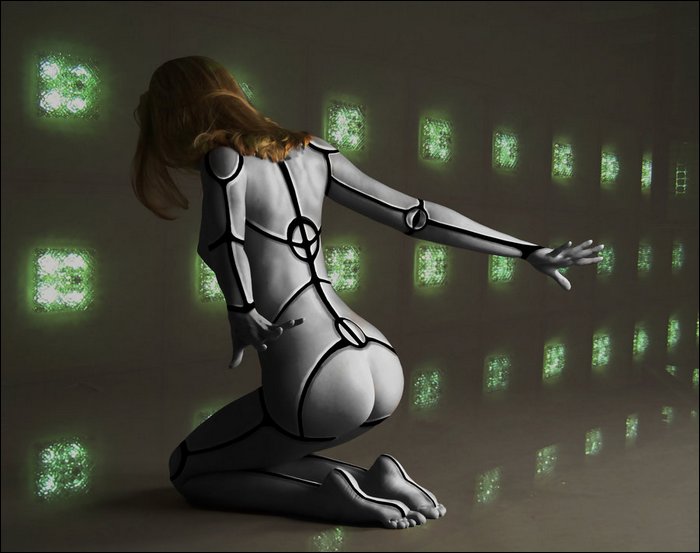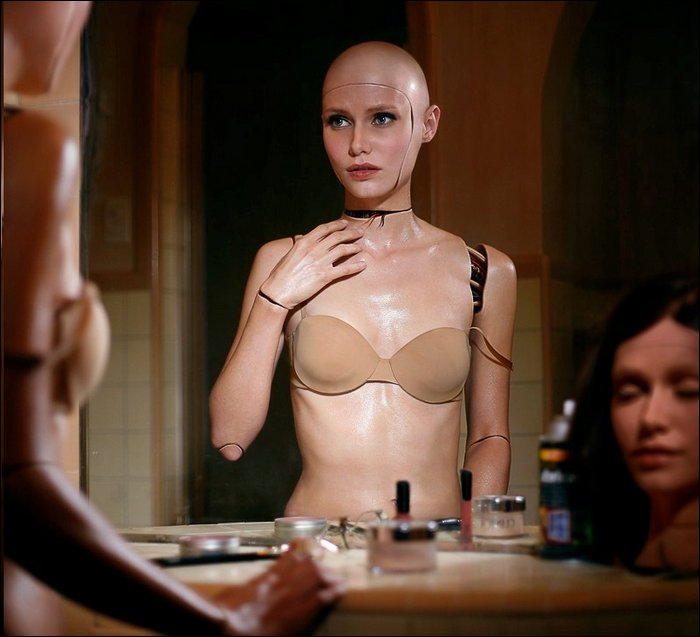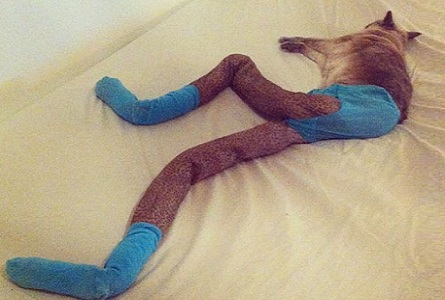A gynoid is a humanoid robot designed to look like a human female, as compared to an android modeled after a male. The term gynoid was coined by Gwyneth Jones in her 1985 novel Divine Endurance to describe a robot slave character in a futuristic China, that is judged by her beauty. The term is not common, however, with the masculine term android being commonly used to refer to both “genders” of robot. The word fembot (female robot) has also been used. Gynoids have also been used as a metaphor in feminist discourse, as part of cyborg feminism, representing female physical strength and freedom from the expectation to reproduce.



Female-appearing robots have also appeared in real-life, with early constructions being crude. The first gynoid was produced by one British company, for use as a “pleasuring-aid”. It was called simply “36C”, from her chest measurement, and had a 16-bit microprocessor and voice synthesiser that allowed primitive responses to speech and push button inputs. Female-appearing robots have also generated controversy. In 1983 a “busty female robot” was removed from a display at Berkeley college after a petition was presented claiming it was insulting to women. The robot’s creator called this “censorship” by the “feminist movement” and akin to book burning.



The fetishization of gynoids in real life has been attributed to male desires for custom-made passive women, and has been compared to life-size female dolls. The reaction of people to robots that appeared female to different degrees has been studied. The reaction of people to such robots has been attributed in part to gender stereotypes. This research has been used to elucidate gender cues, clarifying which behaviours and aesthetics elicit a stronger gender-induced response.




Artificial women have been a common trope in fiction and mythology since the writings of the ancient Greeks. This has continued with modern fiction, particularly in the genre of science fiction. In science fiction, female-appearing robots are often produced for use as domestic servants and slaves, as seen in the film Westworld, the Paul McAuley novel Fairyland (1995), and the Lester del Ray short story Helen O’Loy (1938) as opposed to male-appearing robots who are traditionally warriors, killers, or laborors.
















Pingback: Tworzenie stron Www koszalin
Pingback: just click the following internet site
Pingback: agencja detektywistyczna warszawa
Pingback: adwokat ?ód?
Pingback: tanie wczasy nad morzem